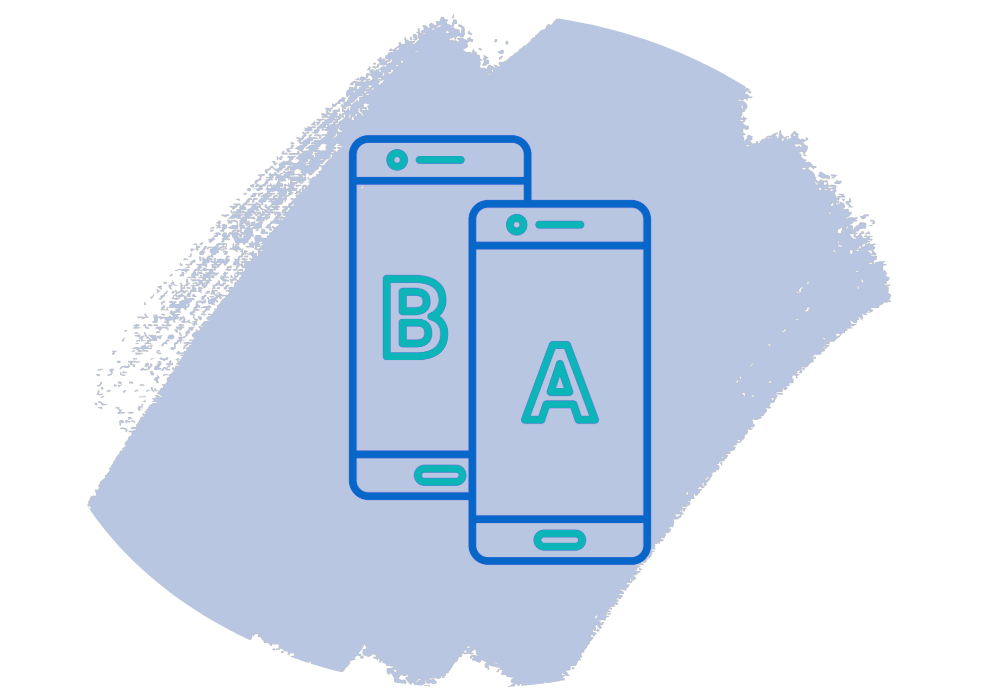In SEO, a lot of what we do can feel like guesswork. While some strategies seem to work, it’s hard to predict the exact outcome of any change, making it difficult to prioritize efforts.
That’s where A/B testing comes in. It helps you determine what works for your site, providing data to back your decisions and focus on what truly moves the needle.
There are many elements of SEO you can A/B test to see what has the most impact. Below, I’ll cover 17 things you can test—from H1 headers to internal linking—to discover what drives better results for your site.
For more on running these experiments, check out my SEO A/B Testing Guide.
1. H1 Tags
One of the simplest and most effective things to A/B test in SEO is your H1 tags. Start by creating a few hypotheses on how to optimise them—like including target keywords, adding numbers (e.g., “10 Best Products”), or making them more descriptive. Then, implement these variations on your test pages to see which version resonates best with search engines and users.
How to measure success: Track changes in impressions, clicks, and organic traffic to gauge the impact of the new H1 headers.
2. Title Tags
Testing title tags is much like testing H1 headers. Start by creating hypotheses on how to improve your meta titles based on keyword research or competitor insights. You can try adding target keywords, making titles more compelling, or adjusting the length. Apply these changes to a set of test pages to see which version performs better in search results.
How to measure success: Monitor changes in impressions, clicks, and organic traffic to determine which title tag variations drive the most engagement.
3. Meta-descriptions

While meta descriptions don’t directly influence rankings, they can have a significant impact on click-through rates (CTR) in search results. You can A/B test different elements, such as adding a call-to-action (CTA), crafting a more compelling description, or including alternative keywords to grab users’ attention.
How to measure success: Look out for changes in CTR and clicks to evaluate which meta description variations are more effective.
4. Number of Internal Links to the URL
Internal linking is a key SEO strategy, as it helps pass “link juice” to target URLs. However, it’s often not tested thoroughly. You can A/B test the impact of adding 2, 3, or even 10 additional internal links to a URL. Start by selecting a group of URLs with a similar number of internal links, then split them into two groups: one for testing and one as a control. Increase the number of internal links for the test group and monitor performance over the next few weeks.
How to measure success: Track changes in impressions, clicks, and organic traffic to see if the additional internal links improve performance compared to the control group.
5. Number of Internal Links on the URL
It’s important to find the right balance of outgoing internal and external links on a page to avoid negatively impacting SEO performance. You can A/B test this by adjusting the number of links on a URL. For example, increase the number of links from 5 to 10 and monitor the results. You can then experiment with adding more links or reducing them to determine the ideal number based on your page type and content.
How to measure success: Track changes in impressions, clicks, and organic visits to measure how the number of outgoing links influences your page’s SEO performance.
6. Anchor text
Anchor text is another ranking signal that could add extra points to your pages. You can A/B test different keywords in your anchor text to see which works best. For example, if you run a sustainable fashion eCommerce site, focus on a specific section, like summer shoes. Change the anchor text in your internal links to something more targeted, like “sustainable sandals,” and observe the results. You can also test other variations like “ethical sandals” or “eco-friendly shoes” to determine which performs better.
How to measure success: Track changes in impressions, clicks, and organic traffic to identify which anchor text delivers the most effective results.
7. Link Building Effect
Does link building really work? It’s a long-standing debate, but a simple way to test its impact is by increasing the number of external links to 10-20 URLs on your website. Compare the performance of these pages to others that didn’t receive additional links. For the most objective results, make sure both the test and control URLs are within the same section or category of your site.
How to measure success: Monitor changes in impressions, clicks, and organic traffic to see if the URLs with more external links perform better than those without.
8. Content Length
When I worked in an agency, I always recommended having at least 300 words of editorial content on landing pages. Why? Because it was standard practice, and I believed that sites with more content on their category pages would outrank those without it. However, when I started working with websites that had millions of URLs, I realized it’s impossible to create custom content for every single page. AI-generated content can help scale this, but there’s no guarantee it will improve SEO—or that it won’t hurt it.
This is why it’s essential to A/B test content length. Try adding longer content to 20-100 URLs and see how it impacts performance. For editorial content, this will help you calculate ROI and determine if further investment is worth it. For AI-generated content, testing ensures that rankings don’t drop before rolling out the strategy across more pages.
How to measure success: Track changes in impressions, clicks, and organic traffic to assess whether longer content has a positive impact on SEO.
9. Content freshness

Sometimes, publishing content earlier than your competitors can give you a ranking advantage, while outdated content may lead to a drop in performance. The key balance I’ve found is not just displaying the original publication date, but also updating it when the content is refreshed. However, from my experience, changing these dates can lead to mixed results, with rankings either improving or declining.
Before applying this strategy across your entire site, it’s smart to test it on 10-20 pages (preferably lower-traffic ones) and compare them to pages where the dates were left unchanged. This way, you can see whether refreshing the dates leads to better results, no change, or even a decline—helping you decide whether to scale the update or roll it back.
How to measure success: Track impressions, clicks, and organic traffic to see if updating content freshness improves SEO performance.
10. Content uniqueness
We all know that duplicate content is bad for SEO and can lead to penalties or removal from Google’s index. But how much unique content is enough to avoid these issues? Is 50%, 75%, or 90% uniqueness the threshold? You can find out by testing. Take pages that have a high level of duplicate content (for example, 95% similarity) and gradually modify them—change the title, headers, editorial content, or product order if you’re in e-commerce or a marketplace. This helps you identify the point at which your pages start performing better in search results.
How to measure success: Measure changes in the indexing of previously duplicate pages, impressions, clicks, and organic visits to see at what level of uniqueness performance improves.
11. Content types
Another area to A/B test in SEO is the type of content you produce to match different user intents. Search queries fall into different categories based on intent, such as informational (seeking knowledge), transactional (ready to purchase), or navigational (looking for a specific page or brand). By aligning your content with these user intents, you can see which type resonates more with your audience and improves your rankings.
For example, you can test creating in-depth blog posts, FAQs, how-to guides, or listicles for informational queries. For transactional queries, you might A/B test optimized product pages, comparison guides, or case studies. The goal is to determine what type of content performs best in meeting the searcher’s needs and driving traffic. This type of test can also help refine your content strategy for different stages of the buyer journey, potentially increasing conversions and overall engagement.
How to measure success: Look out for changes in organic traffic, engagement metrics (time on page, bounce rate), and conversions. You can also monitor keyword rankings for queries targeting different content types.
12. Keyword optimization
A/B testing keyword optimization is another way to experiment with improving website SEO. You can play around with different types of keywords—generic ones vs. long-tail keywords —and see which works better for your pages. Try adding these keywords into your headers, titles, and the content itself to test what drives more traffic.
Another thing to test is keyword density. For example, you could add your target keyword more frequently in one version of a page and use it less in another, and then compare which one ranks better. You can also experiment with variations of keywords in subheadings or even in the meta descriptions to see if that improves results.
The goal is to find a balance that improves rankings and attracts users without overloading your content with keywords.
How to measure success: Keep an eye on changes in rankings, impressions, clicks, and organic traffic. Also, check user engagement metrics like bounce rate and time on page to see if your keyword tweaks are making a difference.
13. ALT text
ALT text helps search engines understand what your images are about, so testing different descriptions can make a difference in how your content ranks. You can try adding descriptive keywords to the ALT text of your images and see if it boosts the visibility of those pages.
For instance, on one version of a page, you can use generic ALT text like “blue shoes,” while on another, try something more specific like “blue running shoes for women.” You can also experiment with adding long-tail keywords or variations that better match the content of the page.
How to measure success: Track changes in impressions, clicks, and rankings for image search results. Also, monitor overall organic traffic to see if optimized ALT text is driving more visitors to your pages.
14. Structured data
Schema mark-up implementation is one of the easiest and most fun things to A/B test, because in many cases it gives a visible improvement on your snippets, like stars or prices. Try implementing various types of schema on some pages and compare their performance versus unoptimized URLs to see the impact.
How to measure success: Look out for changes in clicks, visits and CTR. Also, keep an eye on website impressions.
15. Content layout

Content layout can have a big impact on both user experience and SEO. The way your content is structured—headings, paragraphs, bullet points, images, and overall flow—can influence how long visitors stay on the page and how easily they find the information they’re looking for.
You can test different layouts to see what works best. For example, on one version, you might try shorter paragraphs with more bullet points and subheadings, while on another, you could use longer paragraphs with fewer breaks. You can also experiment with moving images, videos, or CTAs to different positions on the page to see how that affects engagement and traffic.
It’s all about making the content easier to read and navigate, which can lead to better rankings and happier visitors.
How to measure success: Look at engagement metrics like bounce rate, time on page, and scroll depth. Also, check for changes in organic visits, clicks and impressions to see if your new layout is helping your page perform better in search results.
16. International SEO
A/B testing for international SEO is essential if you’re targeting audiences in different countries or languages. You can experiment with various elements to improve your site’s visibility across different regions. One key thing to test is whether using hreflang tags correctly helps search engines understand which pages to show to users in specific countries or languages.
Another test could involve adjusting content to suit local preferences, such as translating content into the local language or including region-specific keywords and cultural references. You can also try tweaking meta tags, titles, and even currency or date formats to make your pages more relevant for international users.
How to measure success: Monitor organic traffic, impressions, and rankings for each target country or region. Check for improvements in engagement metrics, like time on page and conversions from international visitors.
17. *Core Web Vitals
I’m including Core Web Vitals (CWV) here with an asterisk, because while it’s a great idea to test how much impact it has before committing a lot of resources, measuring the results can be tricky. When you optimize for website speed and CWV, the changes usually apply site-wide or to entire page types, making it difficult to do true split testing between optimized and non-optimized pages. This means you often have to rely on gut feeling and past experience to decide if CWV optimization is worth prioritizing for your specific site and niche.
If you’ve found an efficient way to test CWV, I’d love to hear your thoughts in the comments or on LinkedIn!
How to measure success: Focus on tracking site-wide performance metrics like page speed, user engagement (such as bounce rate and time on page), and overall organic traffic after CWV improvements are implemented.
Why A/B Testing Matters
A/B testing is a great way to fine-tune your SEO strategies by testing different elements and seeing what works best. Whether you’re experimenting with H1 headers, title tags, internal links, or content length, these 17 areas give you a chance to make real improvements to your site’s performance.
SEO is always changing, and what works for one site might not work for another. A/B testing helps you move beyond guessing and make decisions based on data. By testing different approaches, you can focus on what really drives better rankings, more traffic, and better user engagement, ensuring your SEO efforts are as effective as possible.

